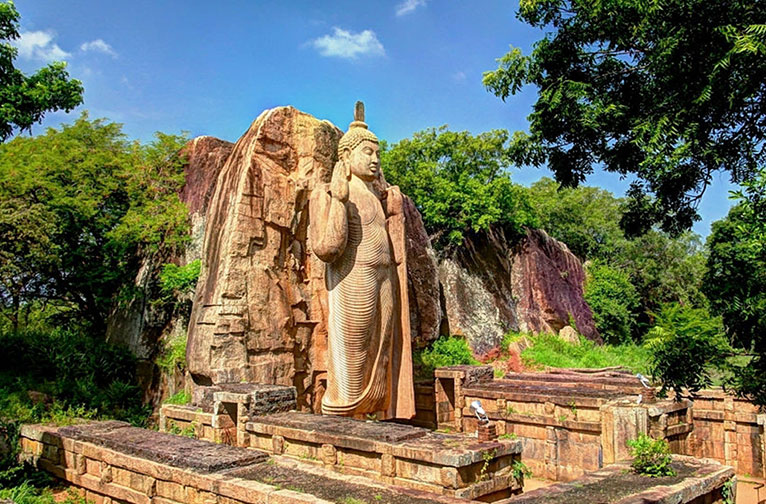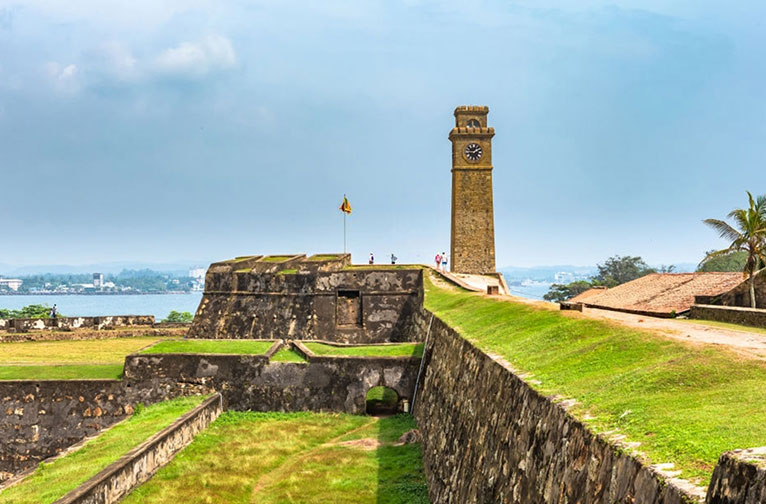A Diverse and Dazzling Narrative
Scattered across the globe are a slew of exceptional natural landmarks and cultural components that have been identified for their outstanding value to humanity. These sites have been considered as a legacy of irreplaceable sources of life and inspiration – something treasured that we pass on to future generations. The United Nations Educational, Scientific and Cultural Organization (UNESCO) seeks to encourage the identification, protection and preservation of cultural and natural heritage sites around the world. The beauty of the World Heritage Site concept lies in its universal application and that these sites belong to all the peoples of the world, irrespective of the territory on which they are located.
Sri Lanka is home to eight such sites—six cultural and two natural.
Sacred City of Kandy
Sequestrated in its mountain enclave Kandy served as the bastion of the Sinhalese Buddhist rulers from 1592 to 1815. The big draw here is the Temple of the Tooth or Sri Dalada Maligawa, which is important for a sacred relic – the tooth of Lord Buddha, which is enshrined here. The relic was not only important for its spiritual symbolism; over time it came to gain great political significance as well; the belief gathered momentum over the years that whoever had the sacred tooth would have power on the island’s Buddhist population. In 1988 Kandy was accorded recognition as a UNESCO World Heritage Site for the Temple of the Tooth and its cultural significance.
Ancient City of Sigiriya
Straddling the summit of the 200m-high granite rock are the remnants of the palace and fortified city of Sigiriya of King Kassapa 1, dating to the 5th CE. The final ascent to the top of the Lion Gate is through the open jaws of a lion hewn into the rock. All that remains of it now are the massive paws. On the way up to the summit, one encounters a landscaped terraced garden set with pools and the beautiful frescoes done here by the Buddhist monks from the 7th and 8th century; it is said that, at the time, this picture gallery featured over 500 murals. The polished mirror wall features still vibrant paintings of damsels. Graffiti inscribed on the rock face from the 6th century are some of the oldest examples of the written Sinhalese language. Access to the site is provided by a vertiginous series of stairs and galleries cut into the mountainside of the Lion Rock. Sigiriya is remarkable for being one of the best-preserved examples of ancient urban planning, with techniques and technology far more advanced than it was deemed possible at the time. Sigiriya was named a UNESCO World Heritage Site in 1982.


Sacred City of Anuradhapura
Ancient Ceylon’s (present-day Sri Lanka) first capital city, Anuradhapura, is venerated as a sacred Buddhist hub. All year round streams of devotees arrive to spend time amongst the remains of the temples and religious centres by the Malwathu Oya River. A landmark site here is one of the largest and most sacred Bodhi trees in Sri Lanka; it is said to be an offshoot of the original Bodhi tree, under which Lord Buddha found Enlightenment. In fact, the city itself is said to have grown around the planted cutting from the original tree, which was brought here in the 3rd century BCE by Sanghamitta, the founder of an order of Buddhist nuns. Anuradhapura became a UNESCO World Heritage Site in 1982.
Old Town of Galle and its Fortifications
A critical port-of-call on the spice route, Galle was founded in the early 16th century by the Portuguese as a maritime garrison town. Galle reached the height of its development under the Dutch, who captured it and transformed it into a bristling fortress – making it the envy of the British, French, Danish and Spanish. In 1802, the island became a British colony and remained so till 1948. Galle opened up a fresh chapter in Sri Lanka history and culture as it is considered the finest example of a fortified city built by Europeans in South and South-East Asia, with its showcase of interaction between European architectural styles and South Asian traditions. The fortified town has been a UNESCO World Heritage Site since 1988.
Ancient City of Polonnaruwa
The second capital of ancient Ceylon, Polonnaruwa, came to replace Anuradhapura when it was destroyed in the year 993 after an invasion. The city is made up of the Chola-period Brahmanic monuments and the massive ruins of the fabulous garden city created by Parakramabahu I in the 12th century. Along with Anuradhapura and Sigiriya, Polonnaruwa forms part of Sri Lanka’s Cultural Triangle. This site was named a UNESCO World Heritage Site in 1982.
Golden Dambulla Cave Temple
This living Buddhist monastic site is remarkable for its fabulous wall murals illustrating an area of 2,100m – and its line-up of 157 statues. The Golden Dambulla Cave Temple complex, comprising five sanctuaries, has been a pilgrimage hub for over 22 centuries. It’s also important for being the largest and best-preserved cave temple complex in Sri Lanka. The Dambulla Cave Temple was named a UNESCO World Heritage Site in 1991 as it is an outstanding example of the religious art and expression of Sri Lanka and South and Southeast Asia; it is also remarkable for its association with the long-standing and wide-spread tradition of living Buddhist ritual practices and pilgrimage for over two millennia.
The Sinharaja Forest
This forest reserve and a biodiversity hotspot in Sri Lanka has earned the designation of a Biosphere Reserve and World Heritage Site by UNESCO since 1988. It is recognized for its international significance as the last remaining primary rainforest in Sri Lanka and is important for its rich and unique plant and animal life.
Central Highlands
The Horton Plains National Park, the Knuckles Conservation Forest and the Peak Wilderness Protected Area fall under the umbrella of the Central Highlands of Sri Lanka. Set at a height of over 6,562 feet it became a natural UNESCO World Heritage Site in 2010. The montane forests are the ancient stamping grounds of several endangered species such as the western-purple-faced langur, the Horton Plains slender loris and the Sri Lankan leopard. The area is a huge draw for hikers and botanical buffs who return enriched by its fabulous biodiversity as the montane expanses are the only habitats of many threatened plant and animal species they are of prime importance for their in-situ conservation.